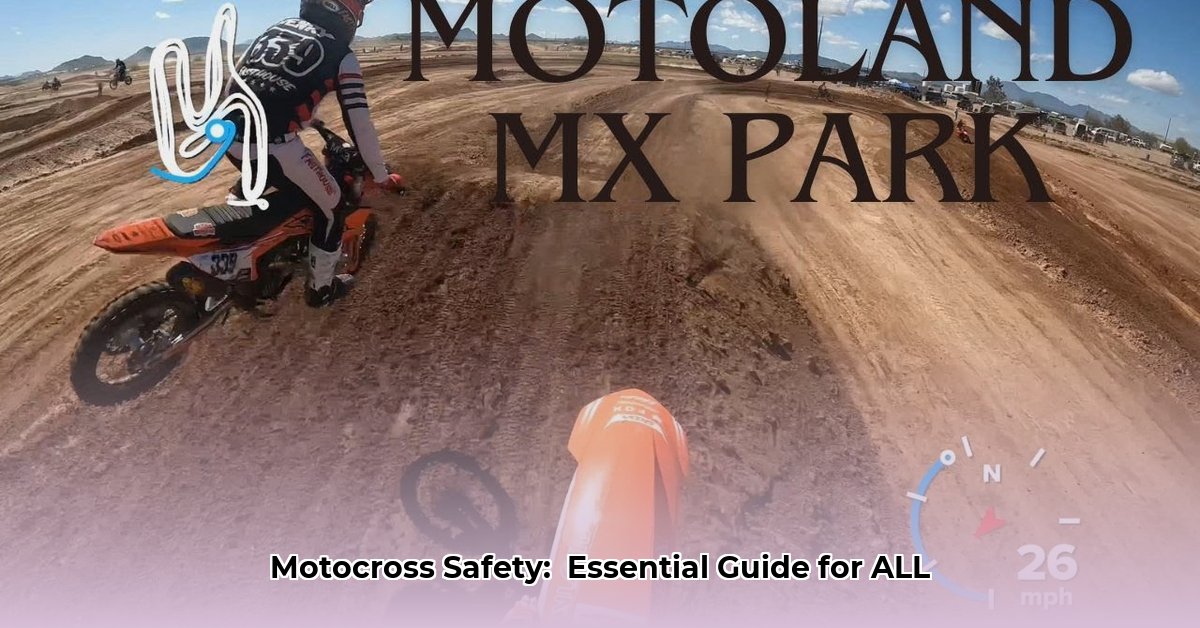
Motoland MX Safety Protocols and Areas for Improvement
Motoland MX presents a compelling opportunity for motocross enthusiasts, but a thorough evaluation of its safety practices is crucial for riders, parents, and investors alike. This analysis examines current safety measures, potential liabilities, and actionable steps for improvement. Our findings are based on publicly available information and a review of Motoland MX's operations.
Motoland MX highlights safety rules and procedures on its website 1. However, a comprehensive review reveals areas needing further attention to ensure robust safety across the facility. For example, the waiver process for younger riders necessitates simplification for improved clarity and comprehension. The current legalistic language can be overwhelming for parents, resulting in anxiety and uncertainty. Similarly, a deficiency exists in the detailed communication of staff training and emergency procedures. Greater transparency in this arena would foster increased rider and parent confidence.
Liability Considerations and Risk Mitigation
A significant concern surrounds the lack of on-site medical insurance. Should a serious accident occur, the absence of immediate medical attention presents considerable liability risks for Motoland MX. To mitigate this, securing comprehensive insurance coverage or establishing a partnership with a nearby medical facility is strongly recommended. This proactive approach would provide swift access to medical care and significantly reduce potential legal and financial repercussions. Transparency regarding liability is equally crucial. Openly communicating with riders and parents about the implemented safety and medical response protocols will foster trust and transparency.
Stakeholder Perspectives: Riders, Parents, and Investors
Motoland MX's operations impact various stakeholders. Their short-term (within one year) and long-term (3-5 years) goals and concerns differ significantly:
| Stakeholder | Short-Term Goals (0-1 year) | Long-Term Goals (3-5 years) |
|---|---|---|
| Riders/Parents | Clearer waivers, readily accessible online safety information, easily accessible contact information | Consistent, high-quality staff training, detailed emergency procedures, improved track signage |
| Motoland MX Management | Comprehensive insurance, enhanced communication of safety information, simplified waivers | On-site medical support, continued track maintenance, regular safety audits and improvements |
| Regulatory Bodies | Full compliance with all relevant safety regulations, clear communication with the park | Proactive participation in the development of future safety standards and best practices |
Actionable Steps for Enhanced Safety at Motoland MX
Significant improvements in safety and trust can be achieved through these actionable steps:
Waiver Simplification: Rewrite the waiver in plain language, avoiding legal jargon, to ensure easy comprehension by parents and guardians. This will clarify responsibilities and minimize ambiguity.
Enhanced Transparency: Publicly and prominently display details regarding staff training frequency, content, and emergency response plans. Providing easily accessible contact information for key personnel is vital.
Comprehensive Insurance: Obtain comprehensive liability and medical insurance coverage to provide riders and the business with substantial protection against potential financial burdens.
Staff Training Investment: Invest in regular, comprehensive safety training for all staff, including hands-on practice with emergency procedures. The level of skill and training should be clearly communicated.
Improved Online Information: Make all safety-related information easily accessible and clearly visible on the website. Organize the information logically and utilize clear, non-technical language.
Ensuring Motocross Track Safety for Minors and Parents
Beyond general safety protocols, Motoland MX must address specific concerns related to minors and parental supervision. While the track requires safety gear (helmets, goggles, long sleeves, pants, gloves, and motocross boots), and uses liability waivers (including notarized versions for minors), several areas need immediate attention. For instance, precise emergency response protocols are lacking. Similarly, the level of required adult supervision for minors isn't clearly defined, necessitating specific guidelines on adult-to-minor ratios and attentiveness standards. Finally, while speed limits exist, consistent enforcement is paramount.
A Proactive Approach to Risk Management
Proactive risk management is crucial. A structured risk assessment matrix is useful for identifying and mitigating potential hazards:
| Risk Factor | Likelihood | Severity | Mitigation Strategy |
|---|---|---|---|
| Rider falls/collisions | High | High | Mandatory safety gear, rigorous track maintenance, strict rule enforcement |
| Spectator injury | Medium | Medium | Clearly defined restricted zones, diligent enforcement of access rules |
| Emergency response delay | Low | High | Well-established communication channels, highly-trained staff, guaranteed ambulance access |
| Insufficient adult supervision | Medium | High | Clear supervision guidelines, improved waiver clarity, and potentially staff-to-rider ratio standards |
| Vehicle accidents (parking) | Medium | Medium | Strict enforcement of posted low speed limits (e.g., 5 mph), prominent signage |
Regulatory Compliance and Continuous Improvement
Adherence to all relevant local, state, and federal regulations is non-negotiable. Motoland MX must obtain all necessary permits and insurance. Regular legal reviews are crucial. Continuous improvement is essential. Regular safety audits and a commitment to adopting industry best practices demonstrate a dedication to rider safety and long-term operational success. The investment in safety is an investment in the longevity and success of Motoland MX.